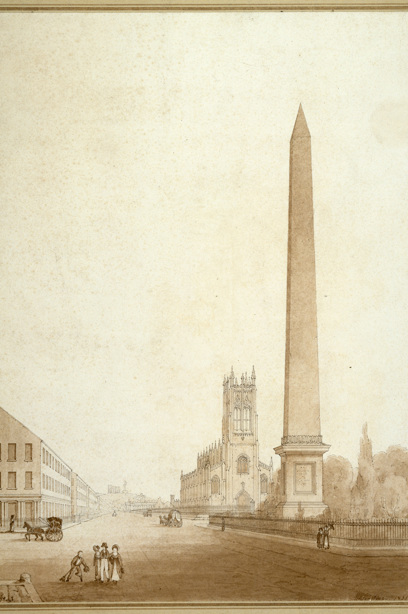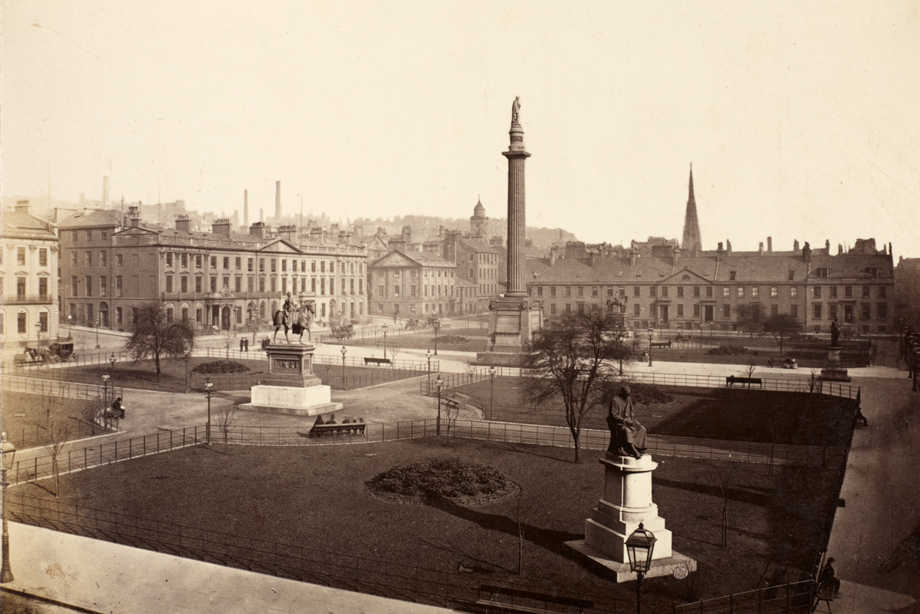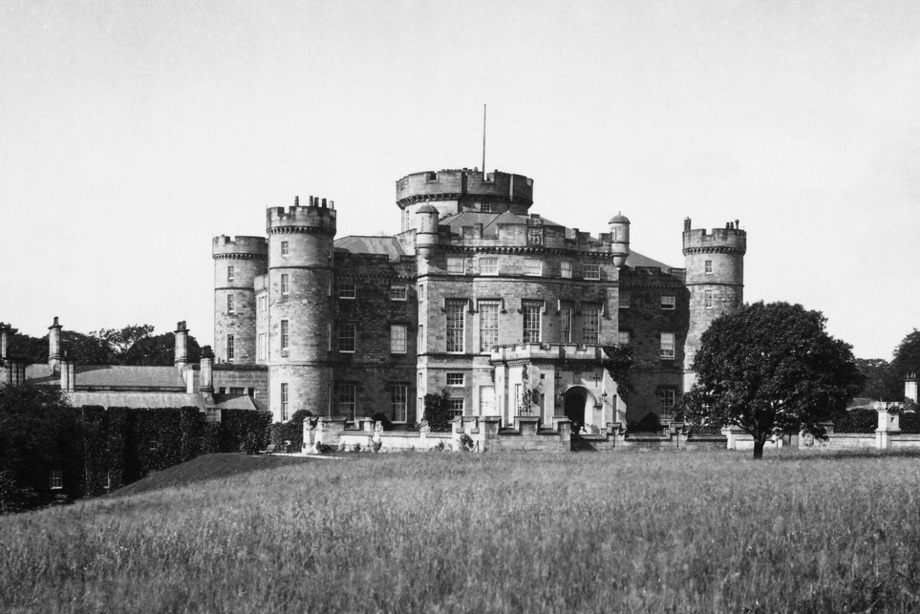Such is the influence of Scott, whether or not we are familiar with his novels and poems, that we all know the names of his many of his works and characters.
Explore the buildings, a ship and towering monuments inspired by, or named after, Walter Scott and his works which form the fabric of Scotland.
The Scott Monument, Princes Street, Edinburgh
The Scott Monument is the world’s second largest monument to a writer. It dominates the Edinburgh panorama.
After Scott’s death in 1832, funds were raised by the architect William Burn and his patron the Duke of Buccleuch to hold an anonymous competition to design a monument.
The design ultimately selected was by George Meikle Kemp. As a young man, he had been given a ride by Scott in his coach as he walked to work in Galashiels. Kemp had a love of Gothic architecture, having been impressed by Roslin Chapel. He would frequently draw Melrose Abbey and Dryburgh Abbey.
A Novel Monument
For the Scott Monument, Kemp realised the idea of the great Gothic shrine using references from his own unexecuted designs for Glasgow Cathedral. Other features draw upon Reims Cathedral and Antwerp Cathedral.
Unfortunately, Kemp died before the monument was completed.
The main structure was completed in 1846 while a further 68 statues of characters from Scott’s novels were added gradually until 1882. Scottish sculptor John Steell carved the statue of Scott and his dog, Maida, at the foot of the memorial.
George Square, Glasgow
The Walter Scott Memorial Column, George Square, Glasgow was the first memorial to Scott to be built.
Completed in 1837, the Scott Memorial comprises a fluted Doric column designed by David Rhind with a statue of Scott on top, wrapped in a plaid. This dramatic addition to the skyline was carved by Alexander Handyside Ritchie to designs by sculptor John Greenshields.
The column stands in the centre of George Square which was laid out in 1782. Many of the buildings surrounding George Square have since been replaced. One side of the square was previously occupied by a row of hotels, including the Waverley Hotel, named for Scott’s novel.
The Paddle Steamer Waverley
The title of Walter Scott’s novel, 'Waverley', is the name which has been used most to commemorate Scott and his works.
After successfully publishing poetry from 1805, Scott’s first novel appeared anonymously in 1814.
It is regarded as one of the first historical novels and follows the story of Edward Waverley at the time of the Jacobite Rising of 1745.
Many of his later novels bore the words ‘by the author of Waverley’ and the series became known as the Waverley novels.
The iconic Paddle Steamer Waverley was built at the Pointhouse Shipbuilding Yard, Glasgow, by A & J Inglis in 1947 to replace a previous steamer which sank in 1940 while helping to evacuate troops from Dunkirk.
It is the last seagoing passenger-carrying paddle steamer in the world. Today it ferries visitors along the Firth of Clyde.
Waverley Station, Edinburgh
Another well-known use of Waverley is at Waverley Station, Edinburgh.
Work began on a station on this site in 1844, at the same time the Scott Monument was being built nearby.
The station has expanded greatly over the years and many areas, including the ticket hall shown here, have been altered.
The station became known as Waverley because the advertising poster for the railway line through the Borders to Carlisle featured Scott’s portrait and the Scott Monument, and the Abbotsford Class of locomotive was also used on the line.
The Waverley route closed in 1969 but was partly reopened in 2015 as the Borders Railway.
Eglington Castle, North Ayrshire
'Ivanhoe' (1820) is one of Scott’s best-known novels, and its name has also been used for places and buildings throughout the world.
This was the first of Scott’s novels to move away from the Scotland of the 17th and 18th centuries to the setting of medieval England.
It sparked a romantic interest in chivalric idealism which carried on through the Victorian age, inspiring such events as the tournament held at Eglinton Castle in 1839.
The Ivanhoe Hotel, South St David Street, Edinburgh
Places named after the novel include the Ivanhoe Hotel, close to the Scott Monument, pictured here in 1964.
The buildings were replaced shortly afterwards by Ivanhoe House, which continued to incorporate a bar of the same name, before being demolished.
Jeanie Deans, the protagonist of the novel 'The Heart of Midlothian' (1818) is also recalled by a bar, and a cottage, now demolished.
The Heart of Midlothian, Edinburgh’s former jail which is the setting for much of the novel, also gave its name to one of Edinburgh’s football clubs, based at Tynecastle Stadium.
Abbotsford Primary School, Glasgow
When Scott bought the farm of Cartleyhole near Melrose in 1811 he coined the name Abbotsford in an allusion to Melrose Abbey which could be seen from the site.
The name Abbotsford has since been used throughout Scotland and across the world including here at Abbotsford Primary School in Glasgow.
It stands in Abbotsford Place, near the site of the now demolished Abbotsford Chalmers Parish Church and was built in 1879.
By 2003, it was in disrepair and was comprehensively recorded in photographs. It has since been converted to offices.
Sir Walter Scott - Celebrating 250 Years
In 2021-22, Scotland celebrates the 250th anniversary of one of its most famous sons, Sir Walter Scott. This online exhibition and audio trail of his legacies is part of the celebrations.















